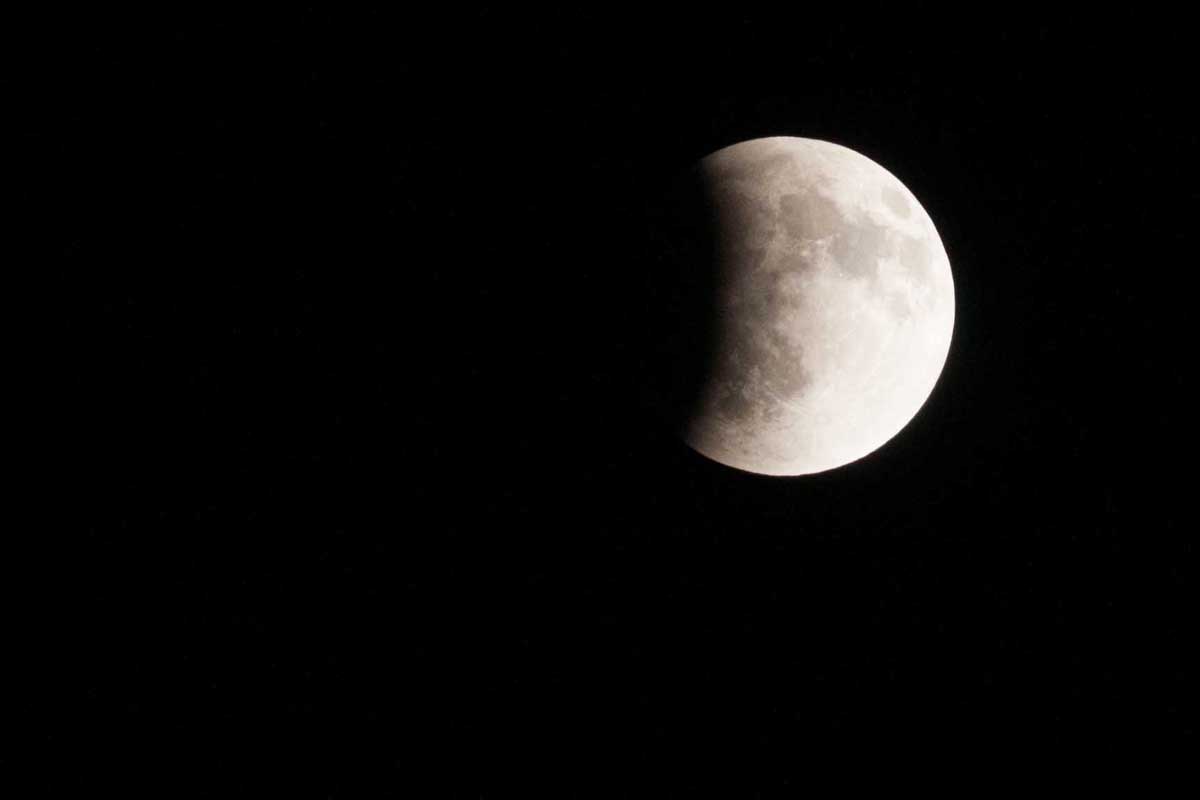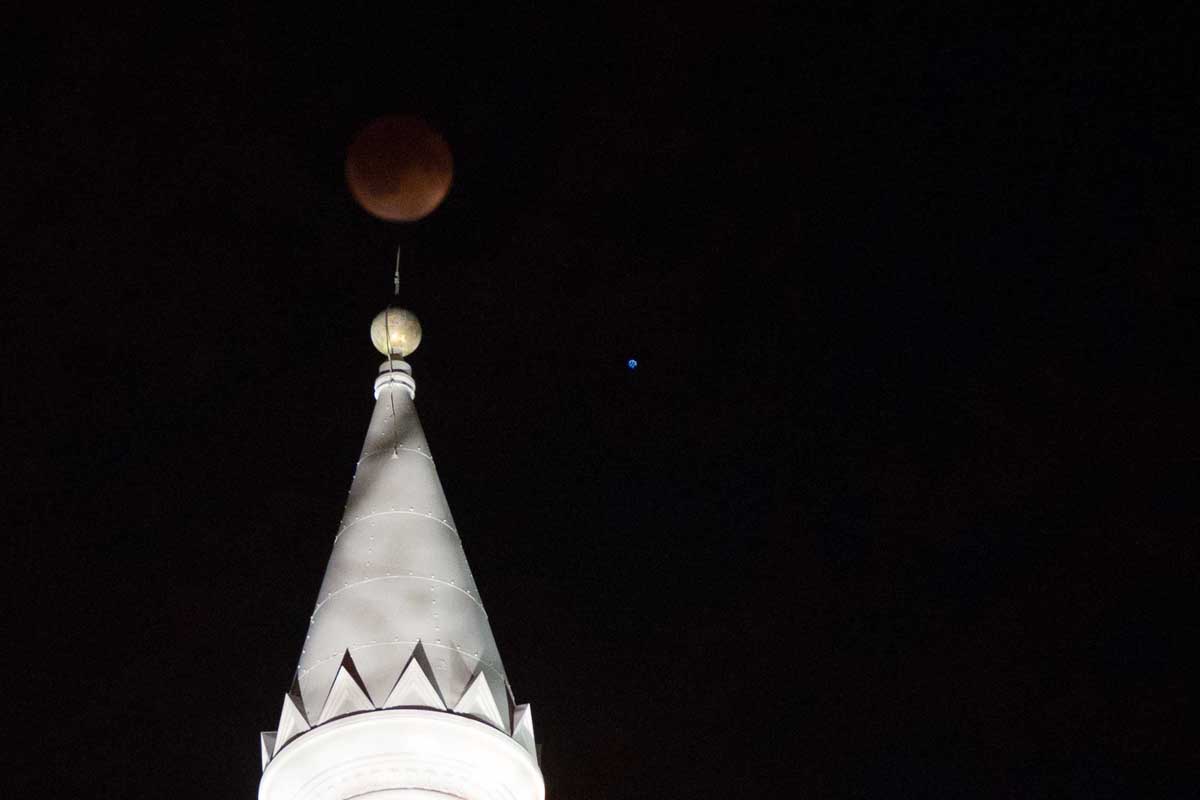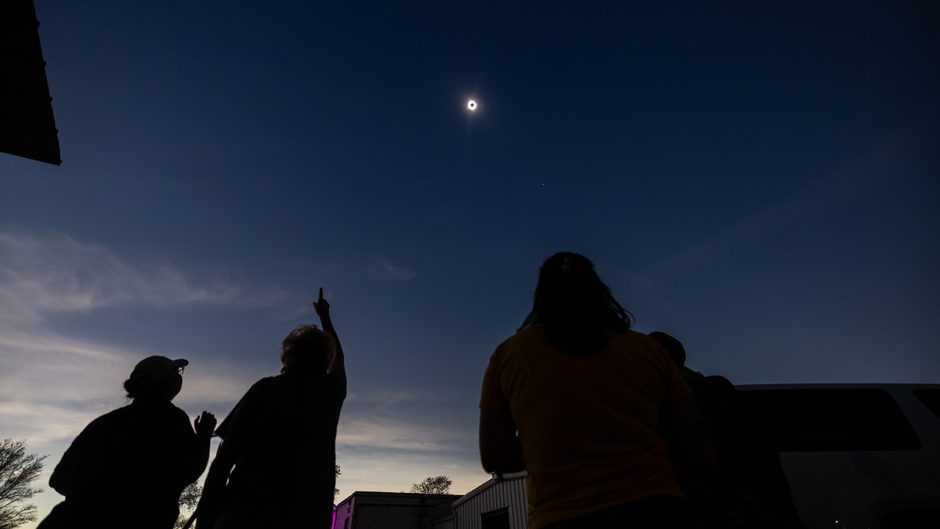Tigers braved the 30-degree weather on the morning of April 15 to see the first total lunar eclipse since 2011. Known as a "blood moon" because of the color of the light refracted onto it, the celestial body was highly visible thanks to a clear night sky. According to NASA, the next total lunar eclipse will be Oct. 8.
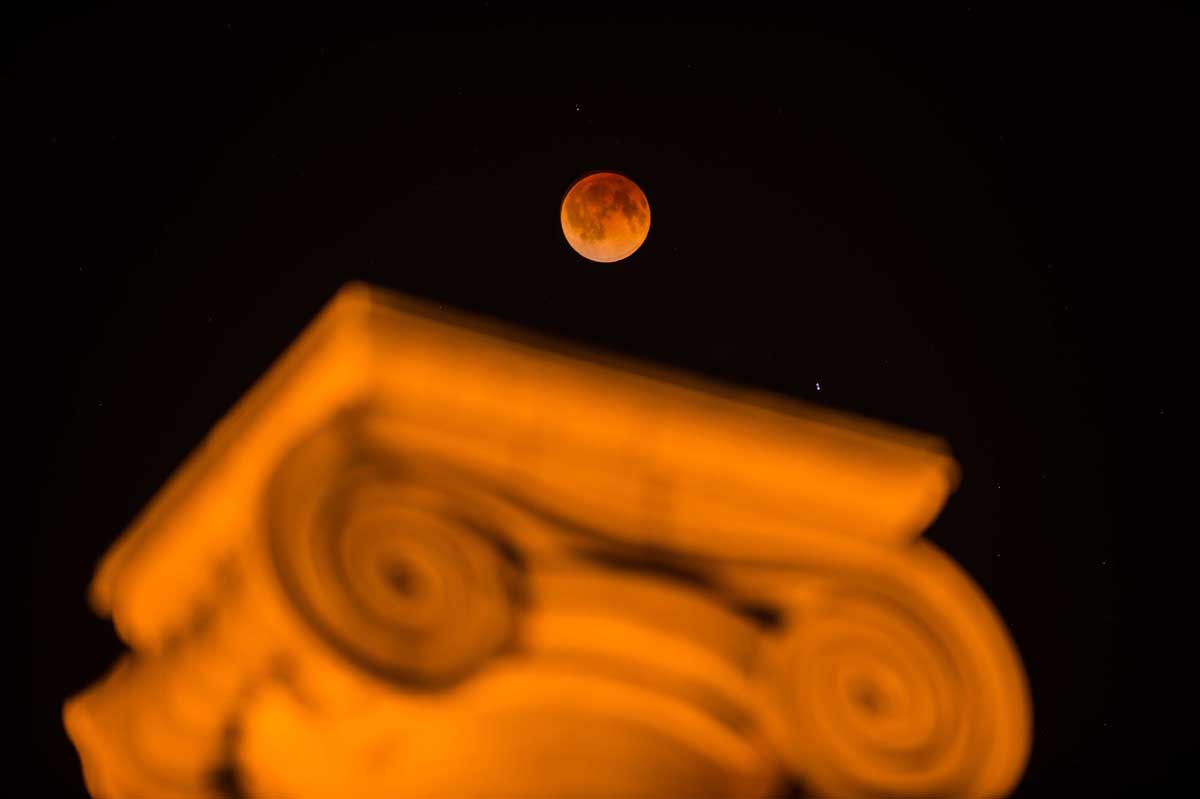
Light from the sun refracts through Earth's atmosphere to cast a brownish-red hue on the moon, known as a "blood moon."

Senior international buisness major Paul Cave and junior occupational therapy major Tina Zhang camp out to watch the eclipse.
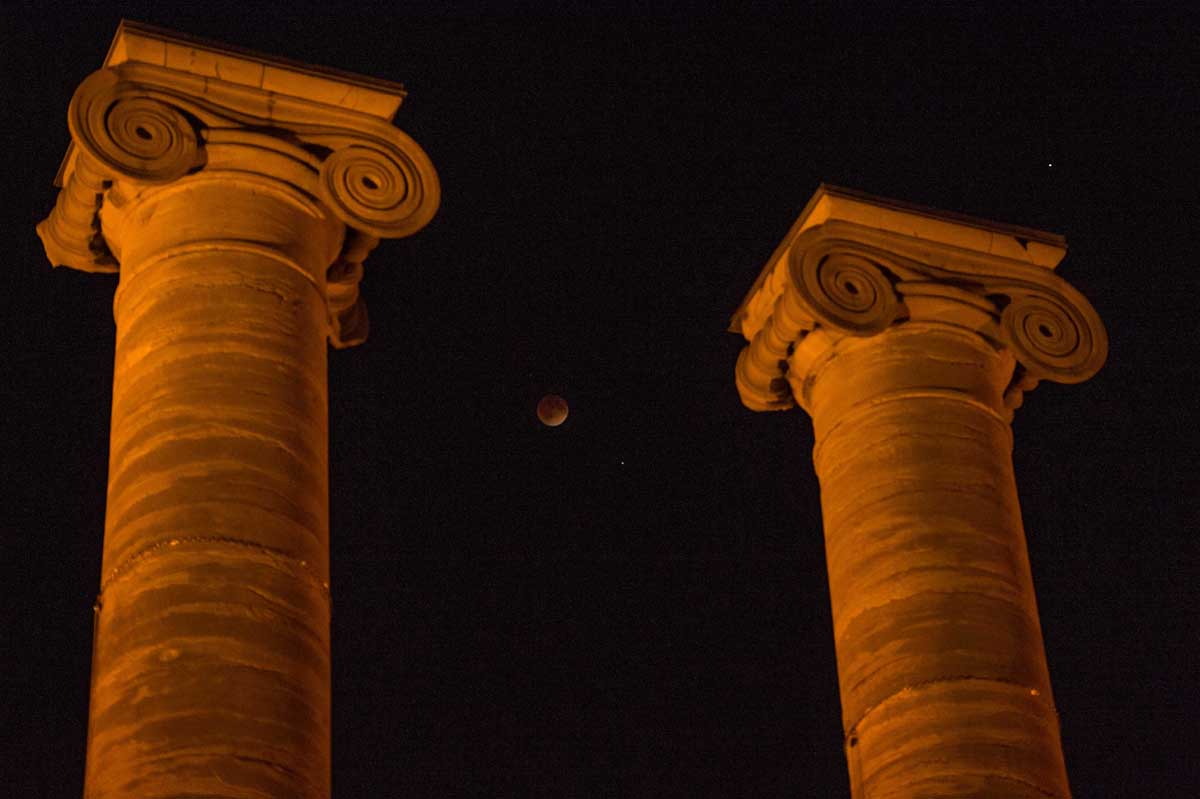
In addition to the moon being highly visible, the star Spica (right and down from the moon) and Mars (up from the edge of the right Column) were shining bright.

Students braved the 30-degree temperatures and kept warm by whatever means possible to not miss the event.
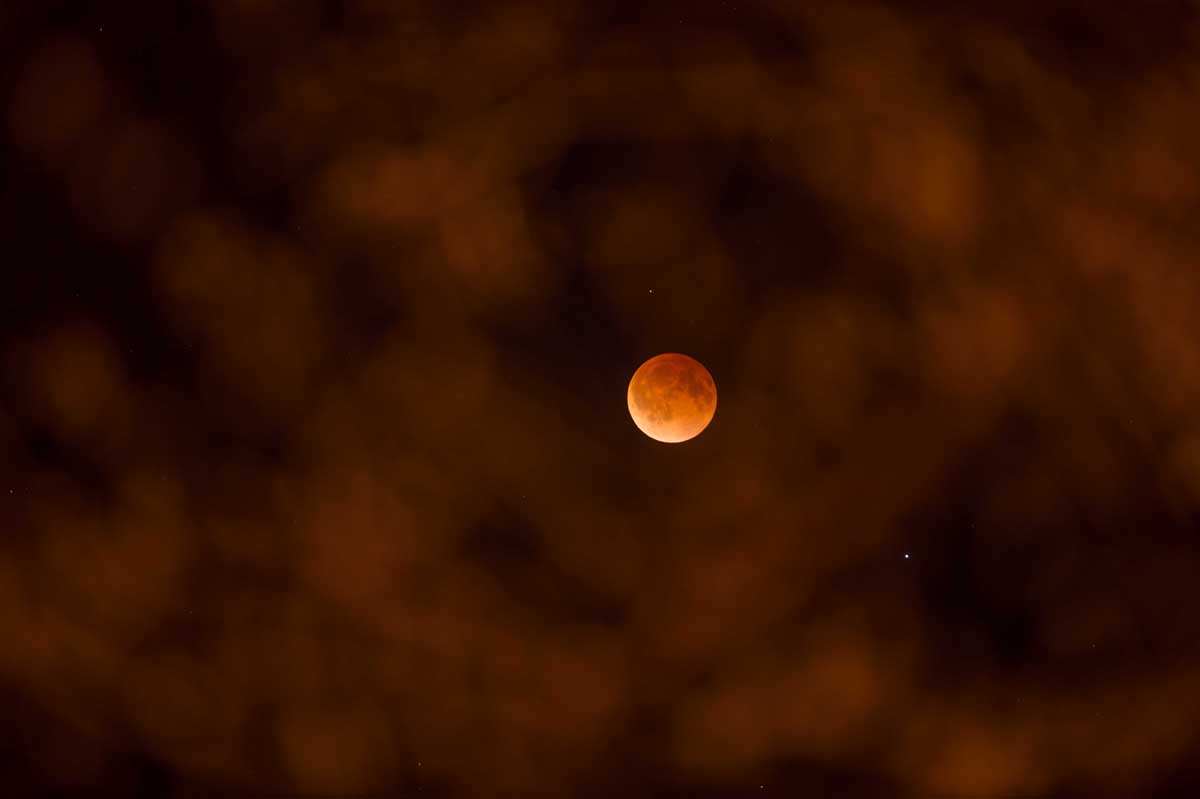
Astronomers say the peak viewing point of the eclipse was around 2:46 a.m. CT. If you missed this one, NASA says the next total lunar eclipse will be Oct. 8, 2014.

